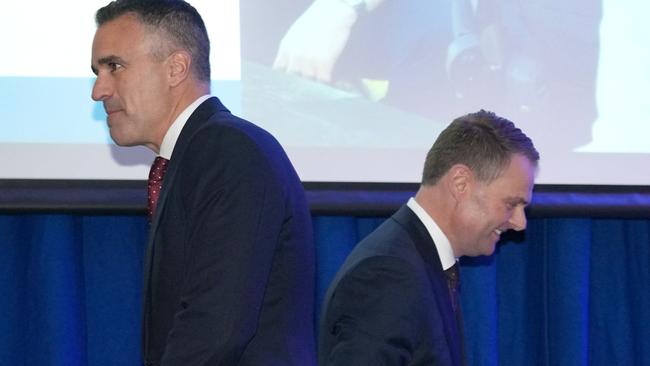Price of promises: Peter Malinauskas’s government spends $9bn extra on health – but ramping is still rampant
Peter Malinauskas’s government has pumped billions into health in a failed bid to “fix the ramping crisis” but have taxpayers got value for their money, Paul Starick asks.
SA News
Don't miss out on the headlines from SA News. Followed categories will be added to My News.
An extraordinary $9bn extra has been ploughed into the state health system yet the core promise that propelled the Malinauskas government to power remains stubbornly unfulfilled.
Labor’s flagship vow at the 2022 state election was to “fix the ramping crisis”, yet the continuing problem of ambulances waiting to offload patients at emergency departments has been well documented.
The key question begging for an answer – after the expenditure of $9bn over four state budgets – is whether the taxpayers have got value for money.
Put simply, how is success measured? Health spending could suck up the entire state budget and, still, the cold, hard reality would be that no system is perfect.
South Australia, like the rest of the country, has an outstanding health system by global standards.
Ask any medical professional or patient in the United States or United Kingdom – our close cultural, security and business allies – where they would rather be treated.

The inescapable conclusion from the Labor health spending splurge is that billions of dollars of public money have been spent for a questionable return on investment.
Like a mouse on a wheel, Labor remains doggedly committed to its overblown campaign promise to “fix the ramping crisis” yet has remained static on the goal.
The government has tried to divert measurement of the 2022 election promise to ambulance response times, overall spending, and the addition of health personnel, equipment and beds.
For example, ambulance response times in January were hailed as the best “in more than four years” by the Premier, while Health Minister Chris Picton declared this showed “that our investment in the state’s ambulance service is reaping rewards”.
Delivering Thursday’s state budget, Treasurer Stephen Mullighan boasted that his fourth budget injected a further $1.9bn into health, taking the total spend since 2022 to $9bn. “This investment to date has allowed us to recruit record numbers of doctors, nurses, ambulance officers and allied health workers, and we will have built an extra 330 beds by the end of the year,” he said in his budget speech.
“The government’s investment has drastically reduced ambulance times, so sick people receive the critical care they need as soon as possible. But there is still much more work to be done.”

With all due respect to Mr Mullighan and the decent, honourable people throughout the public health system, that work will never be done.
As one medical professional privately argued, we could build a 1000-bed hospital and it would reach capacity within days, and would remain full forever.
The drawback to Australia’s lauded universal health care system is that it incentivises people to besiege public hospitals and their emergency departments, rather than wait for GPs or aged care places.
This can frustrate hardworking frontline health care workers, particularly in emergency departments, when they become choked with people and bureaucracy.
Mr Malinauskas and his ministers have already pivoted away from ramping to position housing and community safety as central issues at next March’s state election.
The $395.1m law and order package in the state budget, including growing the police force to 5000 sworn officers, was designed to inoculate the government from an Opposition campaign arguing crime is out of control.
At some point, though, the Malinauskas government must start to produce better evidence of value for taxpayer money from their health expenditure.
Boasting about extra capacity is fine. But has patient treatment improved? Have queues shortened? Have staff workloads been made more manageable? Has productivity been boosted?
The Premier and Treasurer are highly attuned to the importance of spending public money wisely to grow the economy, jobs and prosperity. They must privately wish some of the $9bn had been spent on that.
More Coverage
Originally published as Price of promises: Peter Malinauskas’s government spends $9bn extra on health – but ramping is still rampant






